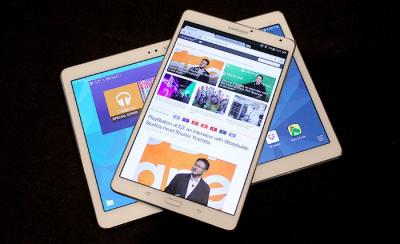OLED displays use organic materials that emit light when electricity is applied. OLEDs enable emissive, bright, thin, flexible and efficient displays. OLEDs are set to replace LCDs in all display applications - from small displays to large TV sets.
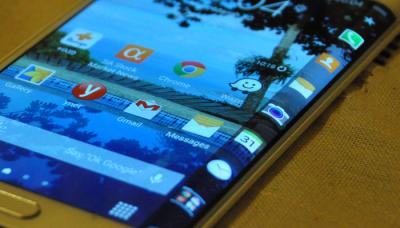
Samsung's Super-AMOLED displays, announced in January 2010, are AMOLED displays for mobile devices (such as smartphones, wearables and tablets) with an integrated touch function. The thickness of the touch sensor is just 0.001 mm and this allows the screen to provide better images and to have great visibility even in direct sunlight compared with regular AMOLED displays with an external touch layer.
Super AMOLED and the PenTile matrix
Samsung's Super-AMOLED displays use a Pentile matrix sub-pixel design. That means that the green sub-pixel is shared by two pixels and the display has only 2 sub-pixels per real 'pixel' compared to the classic RGB matrix design (or Real-Stripe). You can see a PenTile matrix vs a Real-Stripe one on the images below (the PenTile is on the right). Newer Super AMOLED displays use a different PenTile matrix (Diamond Pixel pattern).
Super AMOLED vs Dynamic AMOLED
In 2019 Samsung introduced its next-generation mobile display technology, which it calls Dynamic AMOLED. Basically a Dynamic AMOLED is similar to a Super-AMOLED display, but it adds HDR support. It seems as if Samsung is no longer using the Dynamic AMOLED brand for its latest displays.
Further reading
The latest Super AMOLED news:
Samsung unveils its 2016 flagship phones, the S7 and S7 Edge
Samsung unveiled its 2016 flagship phones, the Galaxy S7 and S7 Edge. The phones feature similar specs, but the Edge has a large display that is curved around the edges (a flexible OLED of course) and a larger battery.

The Galaxy S7 sports a flat 5.1" 2560x1440 (577 PPI) Super AMOLED display, an 12MP camera (with a new high-performance sensor), 4GB of RAM, 32/64 GB of storage, optional dual-IM, NFC and a 3,000 mAh battery. The phone has a metal and glass body and is IP68 water resistance (up to 1.5 meters for 30 min).
Samsung announced new editions of the A7, A5 and A3 smartphones - all with Super AMOLED displays
Samsung launched three new smartphones today - new 2016 editions of the Galaxy A7, Galaxy A5 and Galaxy A3. All three new phones sport Super AMOLED and will launch in a couple of weeks in China (and globally later on).
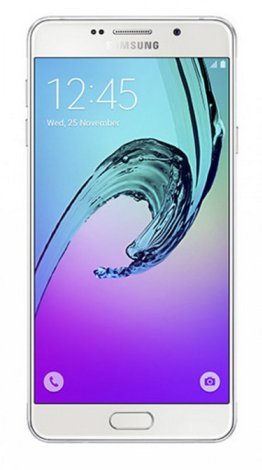
So first up we have the The Galaxy A7 (2016 edition) - a large smartphone with a 5.5" Full-HD Super AMOLED display. The A7 uses an octa-core CPU, 3GB of RAM, 16 GB of storage, microSD slot, 13 MP camera, fingerprint reader and a metal and glass body.
Samsung's Super-AMOLED Galaxy Tab S2 to ship September 2nd
Last month Samsung launched two new AMOLED tablets, the Galaxy Tab S2 9.7-inch and Galaxy Tab S2 8-inch. Those two high-end tablets will start shipping on September 2nd, and you can now pre-order those tablets: the 8" one for $399.99 and the 9.7" one for $499.99 (those are the Wi-Fi only, 32GB models).
Both tablets adopt QXGA (2048x1536) Super AMOLED displays (263 PPI on the 9.7" and 320 PPI on the 8"). Other features include an octa-core CPU, 3GB of RAM, 32/64 GB of internal storage, 8MP rear camera, LTE (on some models), Android 5.0 and a 5,870/4,000 mAh battery. Those are the thinnest (5.6 mm) and lightest (389/265 grams) metal-framed tablets on the market.
DisplayMate: the Note 5 and GS6 edge+ offer significant display improvements over the Note 4 and GS6
A few days ago Samsung launched their latest phones, the Galaxy Note 5 and the Galaxy S6 edge+. Both use a similar 5.7" QHD (2560x1440, 518 PPI) Super AMOLED displays (the S6 Edge+ uses a plastic-OLED curved over the edges). Display measurement experts DisplayMate posted an in-depth review of the display used in these new phones (they tested pre-release production units).
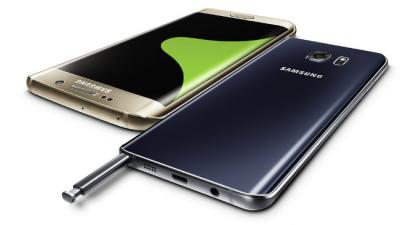
Unsurprisingly, DisplayMate found that these are the best mobile displays they ever tested - there are many significant improvements over both the Galaxy Note 4 (which was previously crowned as the best mobile display) and the Galaxy S6. The most impressive improvements are in peak brightness, screen readability in high ambient light and the power efficiency.
ZTE announces two new AMOLED devices: a smartphone and a smartwatch
ZTE announced two new devices today, both with AMOLED displays. First up is the Axon Watch, which is a smartwatch based on the Chinese TenCent OS (which means it will be sold only in China). It sports a circular 1.4" AMOLED display (400x400) a heart rate monitor, GPS and 4GB of internal memory.
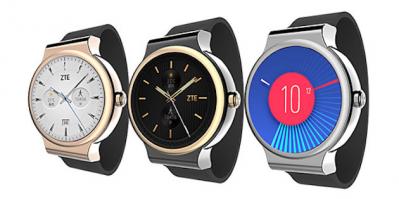
The second device is the Axon Mini - the world's first smartphone that features a force touchscreen. It uses a 5.2" Super AMOLED display - and that's the only information ZTE released at this stage. The company also announced two more Android smartphones - but both use LCD displays.
Samsung announces the Galaxy Tab S2 tablets with new Super AMOLED displays
Samsung today announced two new AMOLED tablets, the Galaxy Tab S2 9.7-inch and Galaxy Tab S2 8-inch. Both tablets adopt QXGA (2048x1536) Super AMOLED displays (263 PPI on the 9.7" and 320 PPI on the 8").
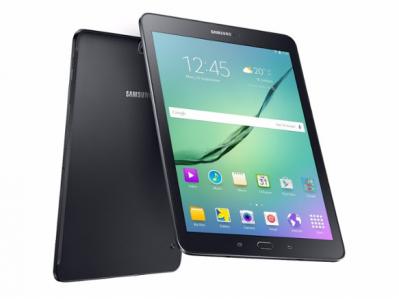
Those AMOLED displays are actually of lower density than those used in the first-gen Tab S tablets (which were WQXGA, or 2560x1600 or 287/359 PPI). Samsung however says that the Tab S2 OLEDs are "newly optimized" and deliver 94% of the Adobe RGB standard for true-to-life colors. The new aspect ratio (the tablets are not as wide as the Tab S ones) is better for reading, too.
Hands on review with Samsung's Galaxy Note Edge
Samsung launched the Galaxy Note Edge back in September 2014 - the company's first mass market flexible OLED phone. The Nice guys at Samsung Israel sent us a review unit a few weeks ago - and here's our hands-on review.
As always this is not a full phone review - we leave those to the experts and for people that actually love mobile phones. We will focus on the display - and our experiences of having this device for a few days. The first part is written by Ron, and then Roni will give her own views.
Samsung expects record shipments for the GS6, may not be able to meet demand for the GS6 Edge
Last month Samsung Electronics reported high demand from mobile carriers for their Galaxy S6 and its curved-display variant the Galaxy S6 Edge, and reports suggested Samsung may want to increase the GS6 Edge output. We speculated that this won't be as easy as it sounds as Samsung Display's flexible AMOLED capacity may be enough.
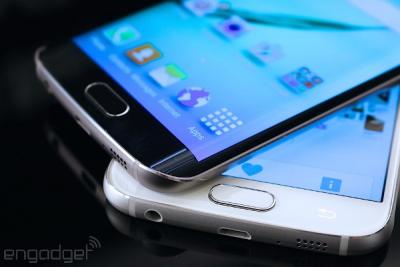
Today Reuters reports that Samsung expects record shipments for the GS6 smartphones, and it will struggle to meet demand for the S6 Edge variant, due to production constraints. Analysts estimate that demand for the GS6 Edge will exceed supply throughout 2015.
Samsung's Super AMOLED tablets are now offered at a $100 discount (till tomorrow)
Samsung is now offering a temporary $100 discount to its Tab S Super AMOLED tablets (Wi-Fi models). The 8.4 ones are now available for $299 while the 10.5 version costs $399. The deal only lasts till tomorrow (Apr 11) so hurry up if you like this price.
It may be that Samsung is preparing to release newer Tab S models, so they may be wishing to clear their inventory. A few months ago we heard rumors that Samsung is planning a large (12.2") AMOLED tablet.
DisplayMate: The GS6 5.1" QHD Super AMOLED is the best mobile display ever
DisplayMate posted an in-depth review of the Galaxy S6 (and GS6 Edge) displays, and they find that this display offers several significant enhancements over the Galaxy S5 display. In fact the GS6's display is the best mobile display ever tested at Displaymate, together with the display used in the Galaxy Note 4.

The most impressive advances over the GS5 are the high density (577 PPI over 432 PPI), higher resolution (2560x1440 vs 1920x1080), a 27% improvement in absolute color accuracy, higher brightness (12% improvement) and higher readability and contrast in high ambient light.
Pagination
- Previous page
- Page 4
- Next page


